#the beast of caen
Text

In 1632, about fifteen kilometres to the south of Caen, France, in the Forest of Cinglais, an animal carried out a reign of terror. Those who survived its attacks described it as a kind of huge mastiff of extraordinary agility and speed.
Two historical documents mention the mysterious beast: the “Gazette de France” of March 19th 1632 and the edition of June 17th 1633. The edition of 1632 announces that the predator has already devoured around fifteen people in a month.
Forest rangers have shot at it with their muskets but are unable to cause any injury. The priests are trying to mobilize the inhabitants of the neighbouring parishes but the population is so traumatised that very few volunteers dare to take part in the hunts. The hunters themselves do not want to venture into the woods unless they are in a large group.
The 1633 edition of the newspaper announces the killing of an animal at the end of a massive hunt lasting three days, organised by the Count de la Suze, with the participation of between 5,000-6,000 hunters and beaters. The Beast of Cinglais looks like a kind of wolf, but is longer, and more red in colour with a more pointed tail and a wider rump than an ordinary wolf. At least thirty people have now been killed.
Another curious fact is that there were a series of attacks only fifteen years later in the Forest of Fontainebleau.
"In 1679, woodcutters were killed and eaten in the Forest of Fontainebleau. Records in the parish of Bois-le-Roi mention several cases of attacks."
Fairly close to both Caen and Fontainebleau is the beautiful cathedral city of Chartres. The “Institut Virtuel de Cryptozoologie” reports how:
“At Chartres, in 1581, a young boy was buried at Ver-les-Chartres, killed by a “wild beast”, “une beste sauvage” whose identity we are not at all sure of.”
A website which specialises in the ghostly aspects of the beautiful Forest of Fontainebleau also carries a few tales of ancient beasts thought to live there:
“There used to exist around the beginning of the sixteenth century a fabulous animal that spread terror in the Forest of Fontainebleau and its surroundings. All indications are that it was a wolf, but some cried “Werewolf”, or tried to blame a magician who was said to be an expert in the art of shape shifting.”
“And then, around 1660, long before the famous Beast of Gévaudan, there was already talk around this area of the Bête du Gâtinais, the Beast of Gâtinais, a frightful creature which looked like a monstrous wolf. His greatly exaggerated exploits, murdering children and young girls, used to feed people’s fears. Such stories caused many sleepless nights. It was even said that the Beast used to cross the River Seine to come and steal little children and animals on the far side.”
Sources:
https://johnknifton.com/tag/the-beast-of-gatinais/
https://cryptozoo.pagesperso-orange.fr/dossiers/devorant.htm
#cryptozoology#cryptid#beast of cinglais#beast of evreux#the beast of caen#monster wolf#history#gazette de france#folklore#mystery#cryptids#werewolf#werewolves
47 notes
·
View notes
Text



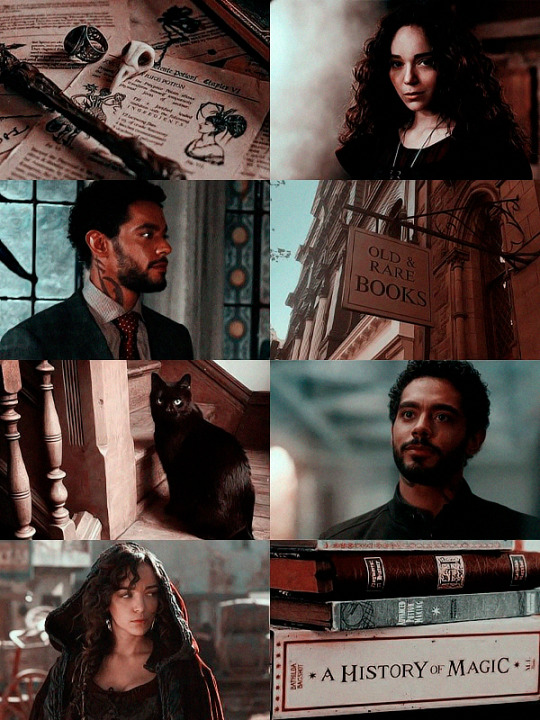




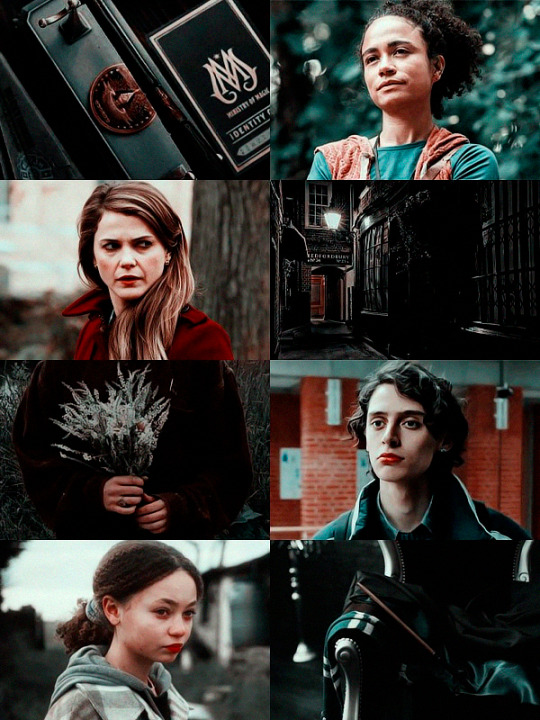
the malinda family
a while back i did one of these for the quinn family so i wanted to give the malindas the same treatment. i don't have faceclaims for all the members out there but i included everyone i did have and some spouses too. additionally, acacia malinda is now canon, good for her!
founders' era:
devon terrel as fergus gryffindor
nathalie emmanuel as iseult of caen
victorian era:
jacob anderson as timotheus malinda
ruby barker as agnes malinda
dalmar abuzeid as jacob macmillan
ashley madekwe as aravis malinda by @potionboy3
nick sagar as leonidas malinda by @potionboy3
fantastic beasts:
gugu mbatha-raw as ethel malinda
lucien laviscount as everett malinda
antonia thomas as eloise malinda
jamie dornan as rory o'neill by @unfortunate-arrow
jude hill as miles o'neill by @unfortunate-arrow
millie davis as jane o'neill
malia baker as catherine "kate" o'neill by @unfortunate-arrow
hphm:
chiwetel ejiofor as mervyn malinda
thandiwe newton as juniper malinda, née raeburn
elliot knight as jacob malinda
iman benson as verna malinda
bianca lawson as elinor greengrass, née malinda
savannah steyn as eliza greengrass
samantha logan as evangeline "angie" greengrass
celeste o'connor as evenin "eve" greengrass
hpma:
lauren ridloff as verna malinda
keri russell as merula malinda, née snyde
eren m. güvercin as rowan "roe" malinda
nico parker as acacia malinda
#the greengrass sisters actually have a dad but i don't have a faceclaim for albert greengrass so rip him!#the malinda family#fergus gryffindor#iseult of caen#timotheus malinda#agnes malinda#jacob macmillan#aravis malinda#leonidas malinda#ethel malinda#everett malinda#eloise malinda#rory o'neill#miles o'neill#jane o'neill#kate o'neill#mervyn malinda#juniper malinda#jacob malinda#verna malinda#elinor greengrass#eliza greengrass#evangeline greengrass#evenin greengrass#merula snyde#roe malinda#acacia malinda#*mine#there are way too many of them lol#anyway i decided to canonize acacia so now i have to make some content for her
12 notes
·
View notes
Text
The Gods are LGBTQ Supportive.
Poseidon and Nerites: On The Nature of Animals, 14.28 "Other stories say that Nerites was loved by Poseidon and loved Poseidon in return, and hence this was the origin of Anteros.And so, as I hear, Nerites spent time with Poseidon and when Poseidon drove his chariot above the waves his speed surpassed all the marine beasts, for the fish, dolphins, and tritons rose from the sea, excited and circling and dancing around, all stopped and were left behind.Truly, Nerites was always near, attending him. The waves submitted with reverence for Poseidon, the sea separating and withdrawing. Because Poseidon wished, the beautiful Nerites to be prominent for many reasons, among them swimming."
Nerites’ sisters begged the god Poseidon to change him back, and he obliged. The mighty sea god was smitten from the sight of the boy, and he offered to make him his charioteer. Nerites agreed, and Aelian says they lived together happily ever after as companions and lovers, even mentioning that the word for mutual, requited love – anteros – derives from Poseidon and Nerites’ love affair.
Poseidon and Caenis--Caeneus was originally a woman named Caenis who was transformed into a man[6][7] by the sea-god Poseidon.[8] According to the Greek mythographer Apollodorus, and a scholiast on the Iliad, Poseidon had sex with her, and afterward she asked him to turn her into an invincible man; Poseidon granted her wish.[9][10] According to Acusilaus, whose version is the earliest surviving, Caenis (here spelled Καινή, Caene), after having sex with him, asked Poseidon to turn her into a man so that she would not bear his child, or anyone else's.[11][12] In another version, Poseidon wished to sleep with her, but Caenis made him promise her a favour in exchange for hers; he did, and she asked to be transformed into a man, whereupon he granted her wish, but due to her change he failed to fulfill his own
Poseidon and Pelops-According to Pindar's First Olympian Ode, Pelops, the king of Pisa, once shared "Aphrodite's sweet gifts" with the ocean god himself. Pelops for a time was taken to Olympus by Poseidon and trained to drive the divine chariot.
Zeus and Ganymede the cup-bearing god of homosexuality.
Apollyon and his various male lovers: Admetus, Branchus, Carnus, Cinyras, Cyparrissus, Hyacinth, etc. Apollo was also lover to Macedonian Prince Hyakinthos, who died catching a thrown discus, then turned by the god into the hyacinth flower. The Pseudo-Apollodorus also said Apollo had been with Thracian singer Thamyris in the first man-on-man relationship in history. And for those who think same-sex nuptials are a 21st-century invention, Apollo also was in a relationship with Hymen, the god of marriage
Chin and Xochopili the Mayan/Aztec gods of Homosexuality.
Hermes- The wing-heeled messenger of the gods was said in multiple myths to have male lovers. In a variation of the Hyacinth myth, it was Hermes' lover Crocus who was killed by a discus thrown by a god before being turned into a flower. Some myths suggest a romantic relationship between Hermes and the hero Perseus. And while some stories list Daphnis, the inventor of pastoral poetry, as the son of Hermes, other sources claim him to be the god of speed's favorite lover.
Dionysus- Best known as the Greek god of wine, Dionysus was also the god of intersex and transgender people. Male lovers of the god included the satyr Ampelos and the famously handsome Adonis. He also once made a journey to Hades and was guided by the shepherd Prosymnus, who led the way in exchange for the chance to make love to the party god. When Prosymnus died before that deal would be consummated, the god created a wood phallus to ritually fulfill the promise, according to research by a number of Christian historians, including Hyginus and Arnobius.
"Perhaps the earliest literary reference to an intersex person concerns this child of Hermes and love goddess Aphrodite who as a youth encountered the nymph Salmacis, who attempted to seduce the youth and asked the gods that their forms be permanently joined. The creature of both sexes was frequently depicted in classical art as a figure with womanly breasts and form but with male genitalia. Above: Francois Joseph Navez, The Nymph Salmacis and Hermaphroditus."
"Twin sister to Apollo, the goddess was by differing accounts a nearly asexual virgin or a lesbian with many nymph lovers, including Cyrene, Atalanta, and Anticleia as well as moon goddess Dictynna. By some accounts, she was Callisto's lover before the nymph was raped by Zeus. Researcher Johanna Hypatia-Cybelaia writes that lesbian and gay devotees worshipped her as Artemis Orthia, and that lesbian port Pamphilia referred to the goddess in hymn as Artemis Pergaea."
Heru/Horus and Set/Seth
While the goddess of love is not identified prominently as lesbian herself, the Greek poet Sappho (as in sapphic) of Lesbos (yes, as in lesbian) told many homoerotic tales and named Aphrodite as the greatest patron and ally of lesbians and homosexuals within the Greek pantheon of gods.
The Egyptian goddess Isis/Aset/Auset, also worshipped by Greeks, is known for solving a gender identity issue of yore. Iphis was born female but raised male by his mother, who concealed the truth because her husband wanted a male heir. Ultimately, Iphis fell in love with Ianthe, a woman, and was betrothed to her. Before the wedding, Iphis prayed in the Temple of Isis for a solution, and voila! she became a he.
17 notes
·
View notes
Text
I'm like a meteorite, the more I fall the Fiery I am
(Soy como un meteorito, mientras mas caigo mas ardo)
Here an oc that i made
Aquí un oc que hize
Meteor flower cookie

Wife of the red dragon and queen warrior of the dragon valley
Esposa del dragon rojo y reina guerrera del valle dragon
Cuando esta enojada o usa su habilidad especial
when she is angry or uses her ability
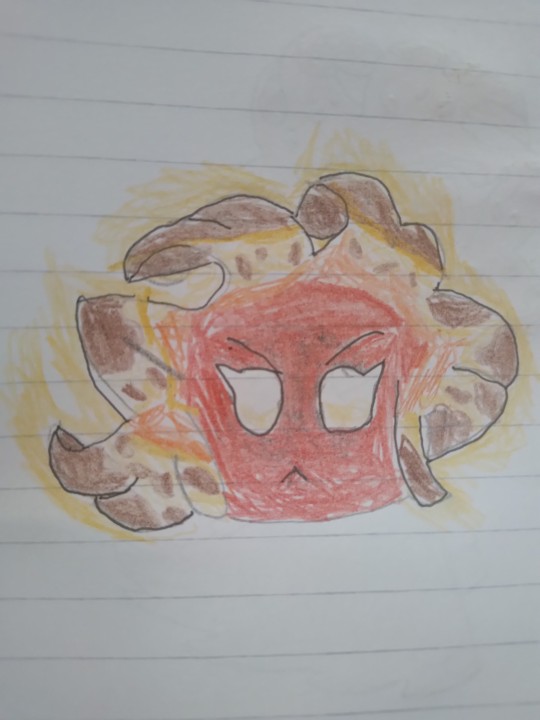
meteor flower left the hollyberry kingdom and her old life to start a new one, nobody expected her to meet the red dragon and both fall in love
When she was little she was very different from girls her age. She didn't want a prince charming, she could take care of herself. she didn't need help against bullies and beasts
Meteor flower dejó el reino hollyberry y su antigua vida para comenzar una nueva, nadie esperaba que ella conociera al dragón rojo y ambos se enamoren.
cuando ella era pequeña era muy diferentes a las niñas de su edad, ella no queria un principe azul ella podia cuidarse sola. ella no necesitaba ayuda contra los bullys y bestias
buena esposa y amorosa madre, enojadala y prepárate para las quemaduras de tercer grado
ella no dejara que alguien se meta con su familia y se salga con la suya
good wife and loving mother, piss her off and prepare for third degree burns
She won't let nobody mess with her family and get away with it.
su habilidad es invocar un monton meteoritos que caen al azar y hacen mucho daño quemando al enemigo
Her ability is to summon a bunch of meteorites that fall randomly and do a lot of damage, also burning the enemy.
#meteor flower#meteor flower cookie#oc#cookie oc#cookie run kingdom oc#meteor flower cookie x pitaya drsgon cookie#dragon valley#cookie run oc#crk oc
0 notes
Text
“An archetypal narrative of folklore centers on the “man-with-fairy-mistress” theme. A mysterious lady encounters a young noble whose passion she arouses and, wishing to hide a dark secret, will not agree to become his lover until she extracts a promise of secrecy from him. Then when her beloved breaks his promise, she suddenly disappears without a trace. Eventually this fairy mistress would receive the name Melusine, and she would be transformed from a fairy into a demonic creature. Such tales became attached to Eleanor by the early thirteenth century, allegedly deriving from accusations voiced at the time of her divorce from Louis VII.
No doubt the image of womanhood that Eleanor presented seemed so contrary to the subordinate role that society assigned to medieval women that the conclusion was that she could only be of diabolical descent. The first written accounts of such a demon mistress appear in books by Walter Map and Gervase of Tilbury, two writers who were among Henry II’s courtiers. Walter Map in his book on courtiers’ follies includes an account of such a mysterious lady, “that beautiful pestilence,” the bride of an eleventh-century Norman baron “who always shunned the sprinkling of holy water.” Her curious mother-in-law spied on her after she left the church and watched her go into her bath, where she turned into a dragon. When her husband and a priest arrived to sprinkle her with holy water, she vanished through the roof.
A few years later, Gervase of Tilbury, who had moved on to the court of the German emperor, completed a book of anecdotes that he had begun for Henry the Young King in which he included a similar tale. Gervase set his version in Provence, where the lord of a castle near Aix, out riding one day, came upon a beautiful lady whom he desired greatly, but she would not give in to his desire unless he agreed to marry her. She warned him that “he would enjoy the utmost earthly prosperity in his wedded life [only] as long as he did not see her naked.” The lord agreed never to attempt to see her unclothed, but finally his curiosity overcame him, and he spied on her in her bath.
When his lady became aware that he had seen her, she turned herself into a serpent, plunged beneath the bath-water, and was never seen again. About the same time that Gervase of Tilbury was writing in the Holy Roman Empire, Gerald of Wales in England was spinning another version of the demon bride tale, this one featuring an early countess of Anjou. Gerald wrote of an ancestor of Henry Plantagenet who very seldom came to church and showed little or no devotion during the service, always leaving immediately after the reading of the gospel and never remaining for the consecration of the host.
Eventually the count, concerned at her strange conduct, had her forcibly restrained by his men when she attempted to leave the church. She took under her arm two of her young sons, and flew out of an upper window of the church in the sight of all the congregation, leaving behind two other sons. Gerald concluded, “And so this woman, more fair in face than in faith, having carried off her two children with her, was never afterwards seen there.” According to him, Richard Lionheart often told this Plantagenet family legend as an explanation for his and his brothers’ quarrelsome natures. Richard allegedly joked that “all had come of the devil, and to the devil they would go.”
Gerald’s tale had the subversive purpose of “placing a she-devil at the very heart of the Plantagenet dynasty.” In the decades following Eleanor’s death, if not earlier, these older legends of women of demonic ancestry came to merge with tales told of her as her reputation steadily worsened. Matthew Paris listed among the reasons for Louis VII’s divorce of Eleanor that she “was descended from the devil.” Two little-known Norman vernacular histories dating from the early thirteenth century also take up the demon legend, applying it to Eleanor. Both include an account of her after leaving Louis VII’s court disrobing before her Poitevin subjects to prove that she was no devil.
They offer, however, a version favorable to the newly divorced queen, demonstrating that she was indeed no demon and refuting tales circulating of her devilish descent. The shorter of these two histories appears to have been written no later than a generation after Eleanor’s death, or even earlier. A manuscript of it seems to have belonged to the Abbaye aux Dames at Caen. Perhaps the nuns there, some of them noble ladies from distinguished families, cherished a more sympathetic memory of their last duchess of Normandy than other tales of her circulating at the time.
This history tells of how, after men of Poitou had come to take her away after her separation from Louis, she disrobed and said to them, “Lords, what sort of beast am I?” And they told her, “By God! There is no more beautiful woman living in this age.” She then replied to them, “I am not the devil that the king of France called me just now.” The second vernacular history from Normandy, dating from early in the second half of the thirteenth century, is much longer, but its story is essentially the same. Clearly the Norman historians who included these two stories intended to salvage Eleanor’s reputation, not to sully it.
They seem unlikely to have meant that Eleanor exposed herself naked to her nobles, but that she only removed her outer garments to demonstrate the beauty of her entirely human body, lacking any demonic characteristics. A few years later, Philippe Mouskès in his Chronique rimé also shows Eleanor, stung by her repudiation by Louis, gathering her Poitevin nobles together and disrobing before them. She asks them, “Is not my body delightful? And yet the king says that I am a devil.” Her barons reassure her of her beauty and that she will soon find another husband. Mouskès, nonetheless, connected Eleanor to the demonic legend through her mother.
After reciting the story of the rejected queen’s undressing before her barons, he adds an account of her parentage. He tells how the “count” of Aquitaine while out hunting met a beautiful lady; married her, and had several children with her, including Eleanor. Then after a time the countess suddenly disappeared as usual in such tales, flying off through the church roof. In the mid-thirteenth century, the anonymous minstrel of Reims gave an account of Louis after his return from crusade, seeking his barons’ advice about what to do with his queen, to which the French nobles replied, “Truly, the best advice we could give you is to let her go; for she’s a devil, and if you keep her much longer we’re afraid she’ll have you murdered.”
The king took their advice, although the minstrel commented, “He would have done better to have her walled up, so that he would have had her great land all his life.” A direct borrowing from the Reims minstrel appears in the fifteenth-century Chronique normande by Pierre Cochon. His account also depicts the French king seeking his barons’ counsel about Eleanor’s fate after the couple had returned from the crusade. This late chronicler also records the barons’ advice “to let her go to the devil . . . where she had come from.” Cochon copies the minstrel’s suggestion: “That was bad advice because it would have been better if he had walled her up. And besides, he had no child from her.”
The Middle English romance Richard Coeur de Lion, composed in or near London around 1300, continues the conflation of Eleanor with earlier tales of a demon bride. This romance does not give the name of the hero’s mother as Eleanor, but names her Cassodorien. Like the demon-countess of Anjou, Cassodorien had the mysterious habit of always leaving mass before the elevation of the host; and when forced to remain for that high point of the mass, she had suddenly flown out the window of a chapel never to be seen again.
In the romance, likely based on an earlier Anglo-Norman poem, Henry II married Cassodorien, the beautiful daughter of the king of Antioch, after she and her father had sailed to England, inspired by a vision. After fourteen years of marriage never daring to let her eyes fix on the consecrated host, one Sunday the king forced Cassodorien to remain in church while the priest elevated the host. At that moment, “She took her daughter by the hand, nor would she be without her son. She made her way out through the roof in full view of them all.” Young John fell, however, and broke his thigh; but she and her daughter flew away, and were never seen again.”
- Ralph V. Turner, “Overwhelmed by a Black Legend.” in Eleanor of Aquitaine: Queen of France, Queen of England
#eleanor of aquitaine#eleanor of aquitaine: queen of france queen of england#history#medieval#high middle ages#medieval literature
32 notes
·
View notes
Photo

Many thanks to @PRHinternational for free e-copy via Netgalley, in exchange for an honest review. Curses by Lish McBride Publication Date : July 20th 2021 Publisher : G. P. Putnam's Sons Genre : Fantasy / Retelling / YA Pages : 448 Ratings :⭐⭐⭐⭐⭐ 𝙍𝙚𝙫𝙞𝙚𝙬: Curses was fantastic and entertaining YA fantasy and retelling of Beauty and Beast about curses, friendship, family, manipulation, deception, trust, social class differences, accepting yourself, hope and love. Writing was beautiful with timeless feel to it set in 1880s with world of faeries, mages, and curses that made it atmospheric. Plot was fun and adventurous. This was more character driven and there were so many characters. Both Tevin and Merit were like characters we used to read in YA fantasy and yet I loved them both. Romance was lovely and slow burn. Though this was a fantasy there was less worldbuilding. World wasn’t explained much. We jump into the world of faery godlings who could gift or curse, mages who couldn’t curse but invented magical things, and humans divided in commoners and those with faery blood that created social and class differences. It was interesting to read about Caen’s bloom that removed the curse for few hours. Overall, Curses was entertaining, adventurous, and very well written well executed Beauty and Beast retelling with lots of characters, good message and lovely romance. I highly recommend this if you love, Retellings Fantasy with less worldbuilding more character driven classic feel rogue hero and kickass heroine slow burn romance balls and gowns Less drama No usual romance tropes witty characters and dialogues 𝙌𝙊𝙏𝘿 : 𝙒𝙝𝙞𝙘𝙝 𝙞𝙨 𝙮𝙤𝙪𝙧 𝙛𝙖𝙫𝙤𝙪𝙧𝙞𝙩𝙚 𝘽𝙚𝙖𝙪𝙩𝙮 𝙖𝙣𝙙 𝘽𝙚𝙖𝙨𝙩 𝙧𝙚𝙩𝙚𝙡𝙡𝙞𝙣𝙜? #Curses #LishMcBride #GPPutnamsSons #BooksTeacupandReviews #PenguinRandomHouse #partner #YA #YAbook #YAreader #NetGalley #romance #Fantasy #YAFantasy #Retelling #Beautyandthebeastretelling #Fantasyreaders #bookstagrammer #bookishlife #bookbloggerofinstagram #readersofinstagram #bookphotography #Indianbookstagram #bookcommunity #bookgram #bookrec #bookreviewblog #bookreviewercommunity (at Ahmedabad, India) https://www.instagram.com/p/CTPYu6iInh5/?utm_medium=tumblr
#curses#lishmcbride#gpputnamssons#booksteacupandreviews#penguinrandomhouse#partner#ya#yabook#yareader#netgalley#romance#fantasy#yafantasy#retelling#beautyandthebeastretelling#fantasyreaders#bookstagrammer#bookishlife#bookbloggerofinstagram#readersofinstagram#bookphotography#indianbookstagram#bookcommunity#bookgram#bookrec#bookreviewblog#bookreviewercommunity
1 note
·
View note
Text
Sussex Churches: St Mary’s Church, Burpham

This is bucolic spot, only accessible through narrow, barely passible roads. When you get to the centre of the village the sun is shining, you find a busy, happy country pub in a little square, people eating outside, the church itself tucked away down a concealed lane opposite. Inside, the church is beautiful. I can honestly say its architecture has a white simplicity and purity I last felt in Palladio’s Redentore church in Venice - and that’s saying something. Pevsner compares these arches to Caen.



At the end of this gorgeous Norman arch are these two little creatures who could have inspired My Neighbour Totoro.or the moomins. Fantastic beasts at the next stage of development from those on the Norman arch at Tortington.

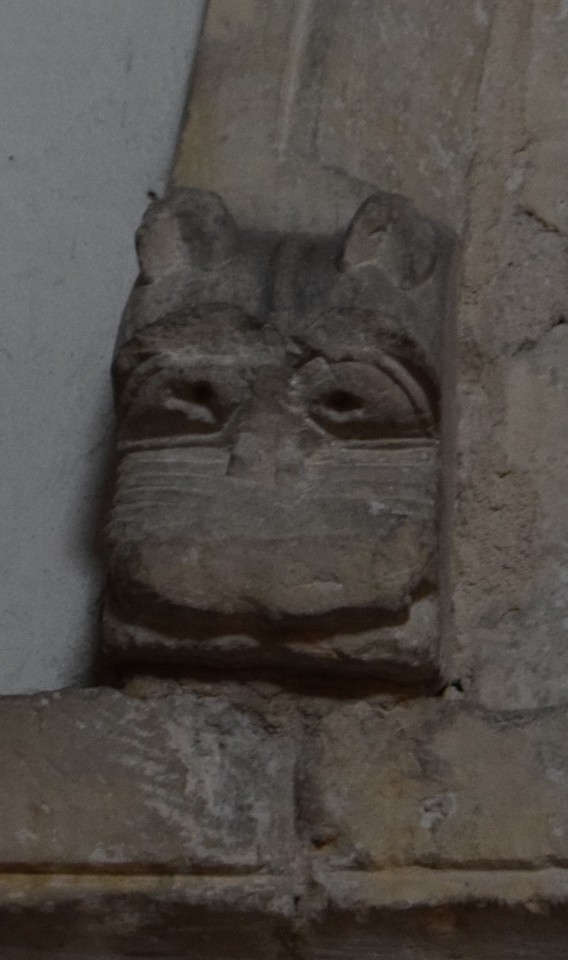
I actually came into the church to see this stained glass, which is 17th century German. The first shows St Margaret and the dragon.
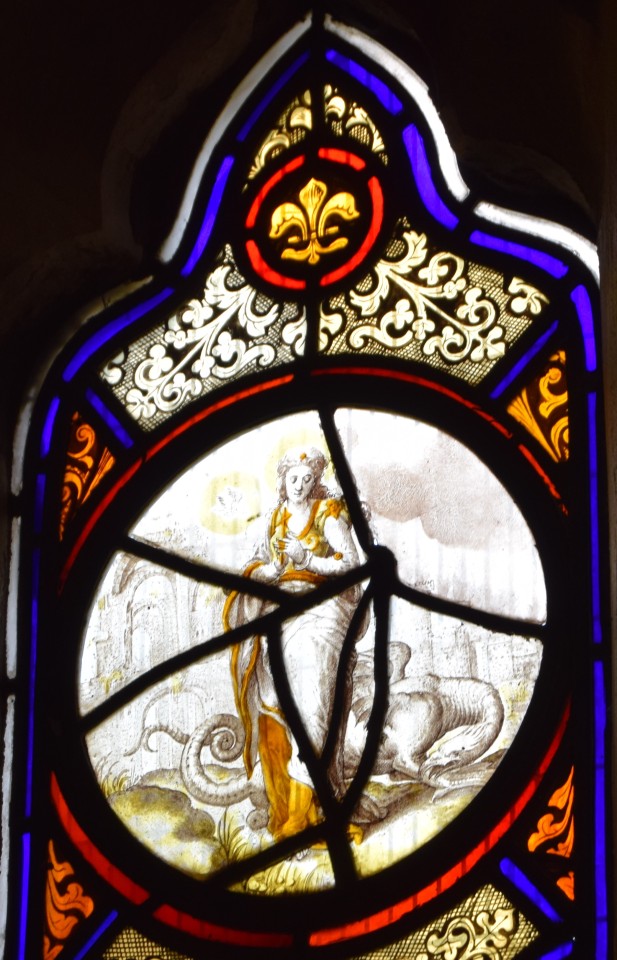
It is hard to capture all the exquisite details with a camera. This appears to be Abraham and Sarah ‘entertaining angels unawares’.

Most of an annunciation, although I’m not sure what the swan (or is it a duck?) has to do with it.
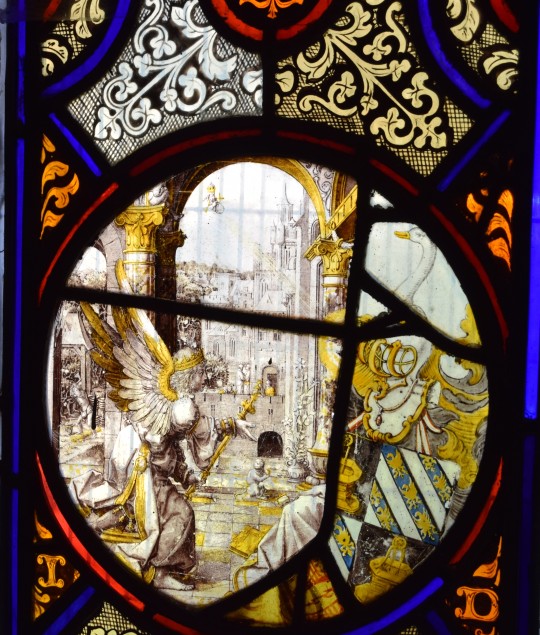
Rather striking 20th century glass by Leonard Walker commemorating an RAF pilot, son of the vicar, who died in an accident:


Strange that church guides (including Pevsner in this case) often ignore the painted inscriptions, which are part of the church’s history too:

2 notes
·
View notes
Text
Eternum// ix
Pairing: Geralt x Reader
Summary: After being turned into a wolf, Geralt struggles to find his way back to his body, unable to talk or do basic human things. In his journey, he meets a young woman, who hopes to help him.
Warnings: adult language, mentions of nudity
Author’s Note: enjoy!
Translations- (1)come wolf, the sun is going down
(2)You’ve done good, Leshy, you may rest now.
(3)Be on your way
Previous, Next

Brutal, fortified, dark, historical.
It stood in front of him, tall, proud… destroyed. Even as the post-destruction of the castle clung to every brick it bore, it was still all of those things. Not one part of the broken fort shouted that it possessed even the slightest remark of ungreat, if anything, it accentuated the prideful disdain it cast over the land it saw to.
“This is a bad idea,” Jaskier says, almost to himself.
Geralt rolls his eyes, You think all of my ideas are bad.
“He’s right, this one specifically seems a little worse than most of your ideas.” (Y/N) says.
Aren’t you supposed to be on my side?
She shrugs, “I’m on the side of living. I’m going to be pissed if we get murdered.”
Jaskier laughs nervously, looking between the two of them, “I don’t know what the two of you are saying, but I’m scared.” he says, sitting behind (Y/N) on Cole (since Geralt didn’t want to share Roach, as usual).
(Y/N) laughs at Jaskier, “Don’t worry Dandelion, we’ll make it out okay.” She rubs his shoulder in comfort. He looks wearily at her before sighing.
“Geralt… it’s nearly sunset, dove.”
As if her voice was laced with another, the sound of it intertwined. It was like she spoke two sentences at the same time as his vision blurred and balance wobbled.
“Cáemm bleidd, feainn ess va ys.”
A growl erupted from Geralt’s throat, glaring at (Y/N).
“What’s wrong?” she asks incredulously. No other voice spoke, just hers. She cautiously approached him, putting a hand to his canine head as he looked down and running her fingers through his fur.
I’m fine. We’re close.
She nods and the pair follows Geralt as he leads towards the forest.
There was an eerie feel to the woods this night. It was normal for him to sit on edge when it came to have so many places for creatures of the night to hide, but it was… different, he concluded.
As the sun set, he bore the pain of transformation once again, as he had every night. While he preferred to be alone during it, he couldn’t stand the sight of (Y/N) and Jaskier’s worriedly horrified faces, he was comforted by her hand against his face, gently pulling him into calmness.
He got dressed after and carried on. His body ached, throat sore, tiredness brushing against him. He refused to let it hinder his facade, instead, pushing on afterward, only stopping when finding an abandoned silver sword.
Howls traveled through the night, echoing against the rocky mountains that lay purchase along the horizon. Geralt’s ears picked it up, focussing on it. His senses followed, he could smell it, tracking the scent and sound two miles ahead and, not surprisingly, deep into the forest. Eventually reaching the meadow, the group could see what lay before them.
“What the fuck is that, Geralt?” Jaskier says a bit too loudly. In quick response, Geralt covers his mouth, pressing a finger to his own lips in a ‘shhh’ display.
A Leshen, He says, Forest spirit, guardian, whatever you want to call it, and it’s right where we need to be.
(Y/N) relays the message quietly to Jaskier, staring at the deer-headed tree monster, “If it’s protecting the forest, then it wouldn’t hurt someone who isn’t trying to destroy it, yeah?”
They don’t know the individual intentions of humanity anymore, they just know that, collectively, we have hurt it. And they’re pissed about it.
“Oh. Makes sense.”
Geralt, now equipped with his silver sword, unsheathed it, steadily walking towards the creature, Stay. He says in a serious tone. As soon as he got too close, the Leshen twisted its neck towards him, making an awful cracking sound that would’ve surely been the end to normal, nonmagical creatures. It pierced the sky with a call, and through the woods surrounding the meadow emerged wolves, snapping and snarling at him, crows flying towards him. He readied his blade, arming himself against what was to come.
It was as if one had attacked, another would join, and the Leshen would attack him from behind. Without magic himself, he couldn’t fully protect, nor prepare or defend himself, from the constant bites and hits. He collapsed, feeling wolves tug and pull on him as he attempts to stop them.
He could hear a feminine scream cast through the meadow, the residue of the word ‘no’ casting it. As if it were a command, the attacks ceased, all creatures stopping and turning their heads to the noise. Geralt sat up slowly, following their gaze. Next to a slightly shaken Jaskier floated (Y/N), though maybe it wasn’t her… a yellow dress curtained her body, an aura of the same color lightened her surroundings, hair flowing behind her as she came towards the beasts.
As she approached, Geralt could see that, yes, it was (Y/N)’s face, but her eyes were white and she was fucking floating with a god damn golden aura.
“Taedh did yeá, Leshy, taedh caen dearme a'taeghane.”
Geralt watched as her hand touched the skull of the Leshen gently, just as she’d done not too long ago, cupping the side of his face. As she withdrew her hand, the Leshen dissipated into ash, leaving nothing but its head on a grassy bed. She looked toward the pack of wolves, smiling softly, “Ess aen te way.”
And as she commanded it, the pack dispersed into the woods. Her gaze landed on Geralt as her feet dropped and planted themselves onto the meadow floor. She lent a hand to Geralt, which he took.
You’re the Lady. He says a bit too casually.
The smile on her face never leaves as she tilts her head, cupping Geralt’s jaw, “I am… not what you could comprehend, Witcher.”
‘Can’t comprehend’ my ass, show me yourself so we can get this over with.
Her smile turns downward into a frown, “So quick to violence, White Wolf. You haven’t even thanked me for returning your voice, your body…”
He glares at her, Why should I thank you when you’re the one that took it?
She laughs lightly, shaking her head, “You must not know who or what you are truly against.”
Then tell me, dammit!
With that, the stones around him glowed, vibrating to the point of making an unbearably loud noise. He closes his eyes and covers his ears in pain.
Then it’s quiet. So quiet. He opens his eyes and looks around. Again, he is on the black water, standing on it as if it were rock. But he can feel the wetness between his toes, and the coolness arise from it. Geralt huffs and the Lady in (Y/N)’s body graces by him, gently touching the lower portion of his spine as she passes. It makes him shiver.
“Do you know what it all means?”
Fucking what?
“Eternum, Geralt. What it is, what all of this is for, what everything means?” she turns around, her glowing gaze cast upon him.
Am I supposed to?
“I wouldn't expect continentals to, no…” she trails off, bending down and dipping her hand into the black water, pulling out a perfectly shaped sphere of it, “It is eternity. Your destiny.”
Geralt rolls his eyes, Destiny isn’t something I believe in, thank you for your time.
She laughs, “You don’t have to. It believes in you, White Wolf.” She tosses the orb to him, which he catches. He can see his own reflection, eyes glinting in it as he stares before bringing his gaze back to the Lady.
“Eternum is much more than destiny. While everyone has a destiny, it changes. Eternity is less fluid, less likely to change coarse than destiny, and Eternum is… rare. It selects its individuals, it is intense, and no matter what you do, it will find its way to you.”
And that’s why we’re here, I’m assuming.
She nods, “You must have a lot of questions floating through your head right now, hm?”
He took a second to think to himself, Yeah, why is (Y/N) mine, what does that even mean? Who are you really? Why am I… the way that I am right now?
She pauses for a moment, turning around and walking forward some, “She is… not what you think. Which is the reason I can vicariously live through her-”
She’s of magical blood then.
“... Yes. She doesn’t know it, however. She is… of a different race all together Geralt, you must understand. As she continues to live on through the centuries, she will always fail to remember. And in this life, you are here to… guide. As in the next life, and the life after that, and so on, and so forth.
“To answer your other question pertaining to me, cultures have, as I’ve noticed, called my race Unicorns. In reality, we just watch from above and below, a reality much different from your own and really, all together, in the same... “
You must, cause you’re not making any sense.
“Your puny, human mind could never fully comprehend my race. All you need to know is, I am here to help. Guide you and (Y/N). You both are more than you realize.” She nearly spits, taking a bite from his ego.
Geralt rolls his eyes and crosses his arms, Then put it into terms my ‘puny human mind’ can understand.
She turns away, hugging her sides.
“She is… kin of a god. And her brother is very upset with her.”
Bold=unable to tag
Taglist: @alwayshave-faith @fabiola-betancourt @justanothergirlwithdemons @ayamenimthiriel @burningcoffeetimetravel @introvertedmouse @tattooedraven1022 @emiwrites3reads @ria-demon29 @bithepowerofgay @cd1242 @mishafaye @psychosupernatural
46 notes
·
View notes
Photo

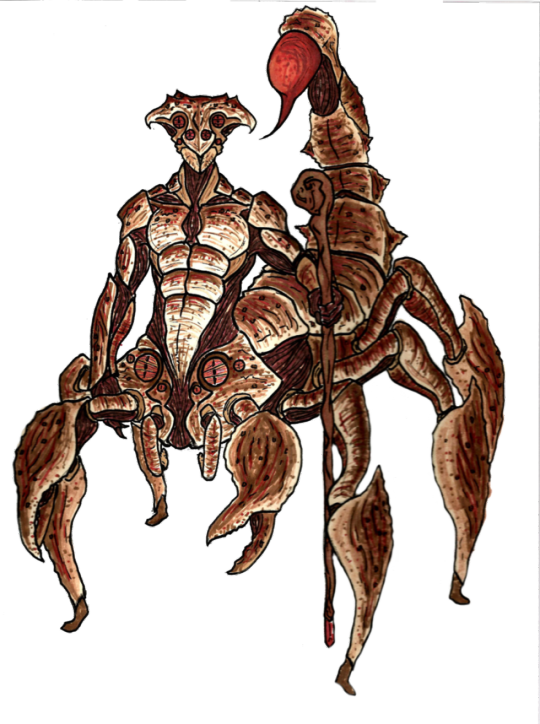
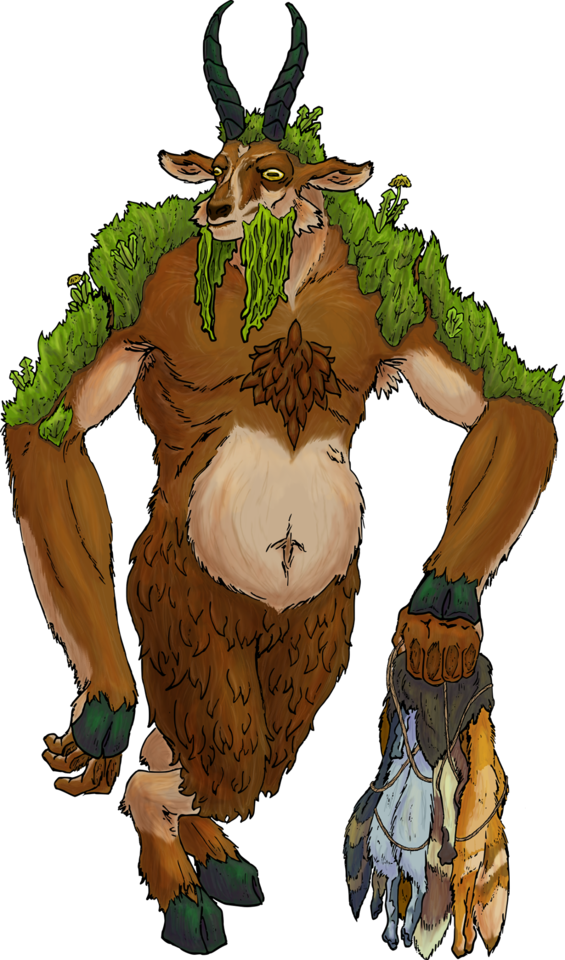
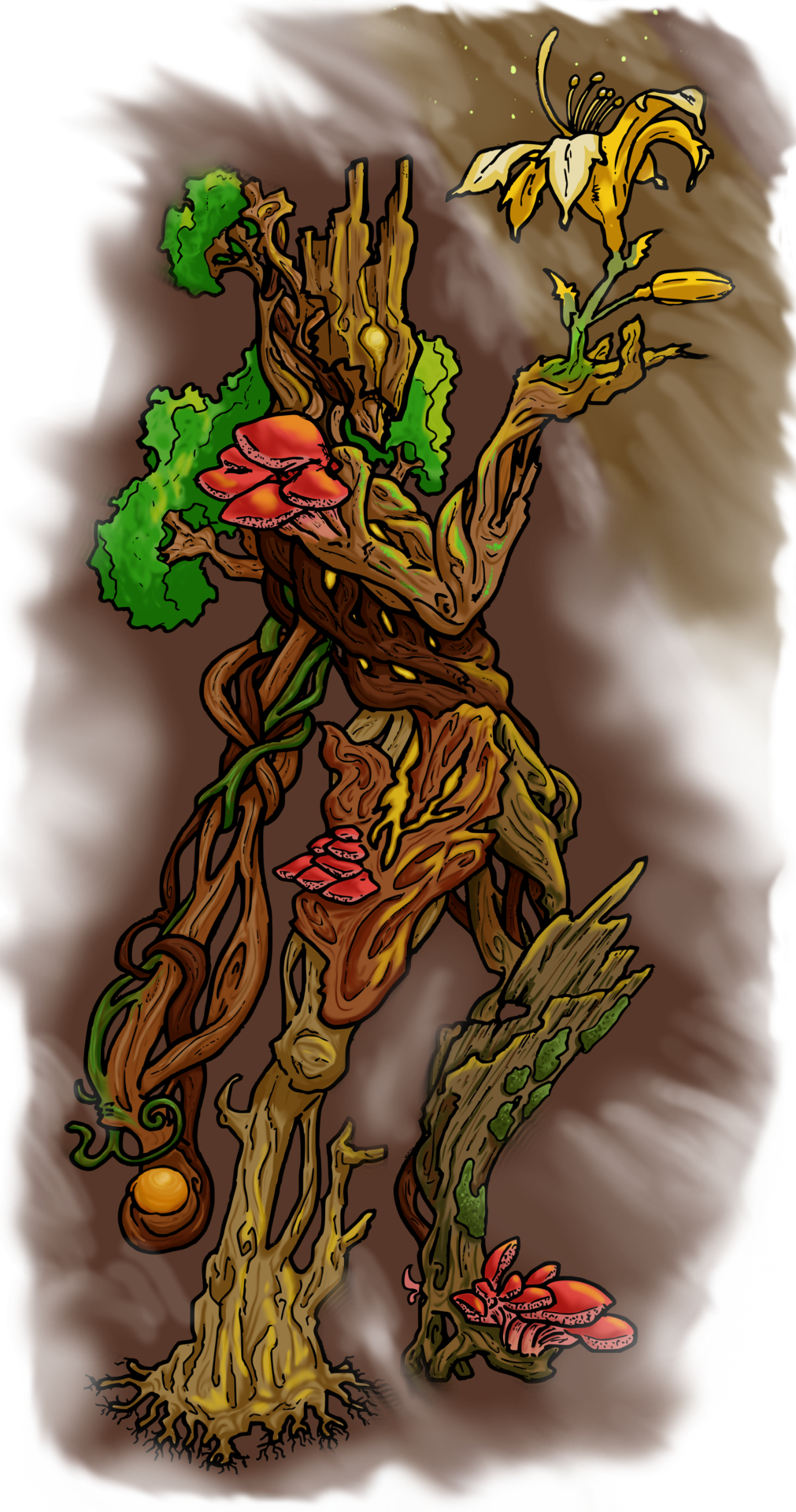
For our 27th post, we take a deeper look at the races offered to us by Solare, the final era.
Today, we're taking a look at 3 races illustrated by Noah S Brown.
The Caen are a scorpion-folk race, one of many such insectoid races crafted by Xycleptl, the God-fragment of insects and decay. While they were one of many such races created, they are also one of the few races that have survived. The Caen are largely thought to be nearly extinct by outsiders, but those who meet Surrak, a keeper of one of the magical colleges of the world, learn from him that they are great in number, but in hiding. Naturally resistant to magic, they were rightly feared by enemies long ago when they were a constantly warring race.
The Naiar are a goat-like race of skin-collectors. So long as they have the skin or hide of a creature, they can shapeshift into that shape. Largely peaceful, they are known as beings of grass. However, they are prone to bouts of rage if pressed too far, and thus have the nick-name of "rage beasts".
The Drald are a race of forest-dwelling creatures, born of the remains of old dryads or ents who have passed. They are considered protectors of the woods. More notably, they are gifters of strange druidic gifts of the woods. Very rare in Solare, they are perhaps the rarest of races in Confluence.
3 notes
·
View notes
Link
Chapters: 1/6
Fandom: Beauty and the Beast (1991), Beauty and the Beast (2017)
Rating: Explicit
Warnings: No Archive Warnings Apply
Relationships: Adam/Belle (Disney), fem!Adam/Belle, Cogsworth/Lumiere/Plumette (very very background), (they'll get more screen time when i eventually rewrite this, ) - Relationship
Characters: Belle (Disney), Adam (Disney), fem!adam - Character, Plumette (Disney), Lumiere (Disney), Enchantress (Disney), Cogsworth (mentioned)
Additional Tags: Inspired by Anastasia (1997), not historically accurate, you know how anastasia has nothing to do with russian history??, it's like that but with the french revolution, also like the first five chapters are maaaayyybe a 't' for violence, this gets an 'e' solely because of chapter six which is the porn epilogue i didn't mean to write, speaking of;, Cunnilingus, Vaginal Fingering, Making Out, and, Making Love, First Time, (for eve anyway), OKAY I THINK THAT'S EVERYTHING
Summary:
For as long as she can remember, Evelyn has been wondering about her past. Rescued from Caen aged seven in the days following the imprisonment of the Royal Family, all she has of her past is a golden necklace inscribed with the words, 'Ensemble à Paris'. When, aged twenty-one, she leaves the workhouse where she grew up, she decides on a whim to follow the necklace's promise and meets Joy and Lizzie, two women who believe her to be the lost princess, Ève of France. What she doesn't know, of course, is that her grandmother has a handsome reward for whoever can produce her granddaughter -- and that Joy and Lizzie are not as altruistic as they appear.
Or, the F/F BatB Anastasia AU you didn't know you needed.
#anastasia au#my fanfic#ARE YOU ALL SATISFIED#chapters will probably go up.... idk weekly? bi-weekly? lmk what you want
14 notes
·
View notes
Photo

ella es una osita hecha de caramelos y chicle ella intente tener una actitus amable y tierna pero en realidad es muy peligrosa y pegajosa como una goma de mascar pero intenta tener una actitud dulce como el caramelo, ella tiene tres etapas
1- ella ataca con burbujas de chicle,cachorros hechos de dulces,menas que explotan,bolitas de chicle y bombas dulces
2- se habre una venta y ella empieza a derretirse y comvertirse en un mountro y ataca con chicles derretidos,ositos de goma,chocolates derretidos,frutillas con chocolate que explotan y paletas con espadas
3- le cae una botella de bebida y se tranforma en una bestia de chicle aun mas derretido y empieza a perseguir a cuphead mientras ataca con sus garras de dulces,escupir bolas de chicle en fuego,con caramelos que caen del cielo y soda explosiva.
she is a little bear made of candy and gum she tried to have a kind and cute attitude but in reality she is very dangerous and sticky like chewing gum but she tries to have a sweet attitude like candy, she has three stages
1- she attacks with bubble gum bubbles, puppies made of candy, exploding ores, bubble gum balls and candy bombs
2- there will be a sale and she begins to melt and become a monster and attacks with melted gum, gummy bears, melted chocolates, exploding chocolate strawberries and popsicles with swords
3- she drops a bottle of drink on him and transforms into an even more melted gum beast and starts chasing cuphead while she attacks with her candy claws, spitting gum balls on fire, with candy falling from the sky and soda explosive.
0 notes
Text
Flash Fiction 596
[English Top] [Español Abajo]
“Are you sure about this?” Charles wasn’t fond of fishing. He had hated every second he passed waiting for a fish to bite during summer camp with his friends.
Thought what they were doing right now couldn’t be called fishing precisely, the mechanics behind were the same. A bait was placed in the middle of the meadow, a hearty piece of meat covered in honey, the favorite meal of the beast.
A beast has lived in the black wood forest for generations now, one that comes out full-moon to scare people away from picnics and campfires. Charles and his friend were determined to catch this beast, become the heroes of their town.
“Shut up, it is almost time.” Says Isaiah.
AROOOO!
By the time they look back, mere seconds, the bait is gone and the beast nowhere to be seen. It has fled and eaten without repercussions. But before the kids can run to the center of the meadow a presence behind them froze their feet and a wet sticky tong licks them all the way from their necks to the top of their heads. Leaving their hair sticking out with leftover honey and slobber.
AROOOOO!
The beast says hello to the children, tail wagging thought they cant see it. They both drop like sacks of potatoes, too scared to keep themselves upright.
The beast whines making a few circles around the kids before laying down to wait for his new friends to wake up from their impromptu slumber.
-¿Estás seguro de esto?- Charles no es fan de la pesca. Odio cada segundo que paso esperando a que un pez picara durante el campamento de verano con sus amigos.
Aunque lo que se encontraban haciendo no podría llamarse precisamente pescar, las mecánicas detrás eran las mismas. Un señuelo fue colocado en el medio de un claro del bosque. Dejaron un enorme pedazo de carne bañado en miel, la comida favorita de la bestia.
Una bestia ha vivido en el bosque oscuro por generaciones ya, una que sale durante las noches de luna llena para asustar a las personas de sus picnics y fogatas. Charles y su amigo estaban determinados a atraparla, convirtiendo así en los heroes del pueblo.
-¡Silencio! Es casi hora.- Dijo Isaiah.
Aroooo!
Para el momento que miraron nuevamente al claro, segundos a penas, el señuelo se había ido y la bestia no se encontraba a la vista. Comió y huyo sin repercusión alguna. Pero ante de que los chicos pudieran acercarse una presencia detrás de ellos los dejo petrificados. Una lengua húmeda y pegajosa lamió desde sus nucas hasta la punta de sus cabezas, dejándoles el cabello en punta y lleno de miel con baba.
Arooooo!
La bestia saluda a los niños, moviendo la cola de lado a lado pero ellos no pueden verlo. Ambos caen al suelo como sacos de papas, demasiado asustados para mantenerse de pie.
La bestia se lamenta dando un par de vueltas alrededor de Charles e Isaiah antes de acostarse y esperar a que sus nuevos amigos despierten de su repentina siesta.
#flash fiction#writing#write#writers#creative writing#Inktober#inktober2019#microrelato#escritos#Escritura#Escritores#escribir#tintubre#tintumbre2019#Tinta derramada#inktober bait#amwriting
0 notes
Photo

#flash#illustration#artwork#taureau#ink#bull#drawing#animal#ancient#animals#dotworktattoo#beast#sketchbook#cornes#creature
1 note
·
View note
Text
La “capacidad de pago” es una mala manera de juzgar una política fiscal, por Mises Hispano.
Al irse aproximando el día de los impuestos, estamos seguros de que oiremos de nuevo a los izquierdistas amonestándonos acerca de cómo los ricos deberían “pagar su parte justa” de impuestos. Su herramienta favorita para lograr esto es un impuesto de la renta altamente progresivo, que obliga a aquellos con rentas superiores a pagar una mayor porción al recaudador.
El impuesto progresivo de la renta es más “justo” porque se basa en la “capacidad de pago” del contribuyente, según sus defensores. Bajo una estructura de un impuesto progresivo de la renta, los que ganan más no solo pagan más en impuestos en dólares totales, sino que pagan una mayor porción de su renta en impuestos. “Los ricos deberían pagar más porque se lo pueden permitir” continúa el argumento.
La justificación de la capacidad de pago ha sido elevada a dogma incuestionable en el ámbito de la justicia fiscal.
De hecho, los progresistas están tan enamorados del principio impositivo de la capacidad de pago que un artículo del Daily Beast del año pasado lo describía como “el principio básico de todos los sistemas exitosos de impuestos a la renta y la riqueza, remontándose casi 2.500 años hasta la antigua Atenas, en la que se inventaron la democracia y los impuestos progresivos como pareja básica de la civilización occidental”.
Pero la doctrina de la capacidad de pago no llega a proporcionar una justificación lógica ni ética a los tipos fiscales progresivos, por múltiples razones.
Murray Rothbard explicaba con detalle todas estas razones en su libro de 1970, Poder y mercado.
Para empezar, la doctrina de la capacidad de pago no considera la riqueza acumulada por una persona, un factor que afecta claramente a la capacidad de una persona para pagar impuestos. “Un hombre que gane 5.000$ cierto año probablemente tenga más capacidad de pagar que un vecino que gane la misma cantidad si [el primero] también tiene 50.000$ en el banco, mientras que su vecino no tiene nada” escribía Rothbard.
Así que usar solo la renta para medir la capacidad de pago de cada uno se convierte en algo ambiguo y no proporciona una guía segura sobre el concepto.
Además, las obligaciones financieras de la persona, como las facturas médicas y otros pagos de deudas, sin duda dificultan la capacidad de pagar un impuesto alto, pero tampoco esto se tiene en cuenta en el sistema del impuesto progresivo de la renta tan amado por los progresistas.
Además, algunos defensores de la doctrina de la capacidad de pago lo hacen comparando los impuestos pagados al gobierno con las donaciones voluntarias a la caridad. La caridad privada, dicen, espera que la gente con mayores medios contribuya con una porción mayor de sus recursos que aquellos con menos.
Sin embargo, comparar la calidad voluntaria con los pagos de impuestos al gobierno es lamentable.
La gente elige qué caridades apoyar y la cantidad de apoyo que recibe cada una. Si alguien cree que una institución de caridad ya no sirve a la comunidad de una manera apropiada, puede retirar su apoyo. Evidentemente no es lo mismo con el gobierno. La gente no puede optar dejar de pagar impuestos. Como escribía Rothbard: “El gobierno es la misma negación de la caridad, porque la caridad es un regalo no comprado, una acción no coaccionada que nace libremente del donante”.
Finalmente, la doctrina de la capacidad de pago no funciona porque daña a la sociedad al penalizar más fuertemente a los más productivos. Aquellos que resultan más capaces de atender las necesidades de sus conciudadanos (al menos en una economía de libre de mercado) creando eficientemente bienes y servicios que otros valoran son quienes caen en los tramos más altos del impuesto progresivo de la renta. “Penalizar la capacidad de producción y servicio disminuye la oferta de servicio, y en proporción al grado de esa capacidad”, declaraba Rothbard. El resultado será un mayor empobrecimiento, sentido más duramente por las personas menos cualificadas y de menor renta, que se ven siempre más perjudicadas por una economía estancada.
A pesar de las protestas de los supuestos defensores izquierdistas de la “justicia los impuestos”, el principio de capacidad de pago no ofrece un argumento lógico ni ético a favor del impuesto progresivo de la renta. Como concluía Rothbard: “En lugar de ser una norma evidente de justicia, el principio de ‘capacidad de pago’ se parece más al principio del bandolero de tomar donde más se puede tomar”.
El artículo original se encuentra aquí.
de Biblioteca Mises https://ift.tt/2HL8tpt
https://ift.tt/2jnW6B4
de nuestro WordPress https://ift.tt/2rgEt9M
Difundimos las ideas liberales, libertarias, minarquistas y anarcocapitalistas. https://ift.tt/2KsyLuo May 02, 2018 at 08:02AM
0 notes
Text
In A Crowd of Thousands
read it on the AO3 at https://ift.tt/2uAinEe
by TheTeaIsAddictive
For as long as she can remember, Evelyn has been wondering about her past. Rescued from Caen aged seven in the days following the imprisonment of the Royal Family, all she has of her past is a golden necklace inscribed with the words, 'Ensemble à Paris'. When, aged twenty-one, she leaves the workhouse where she grew up, she decides on a whim to follow the necklace's promise and meets Joy and Lizzie, two women who believe her to be the lost princess, Ève of France. What she doesn't know, of course, is that her grandmother has a handsome reward for whoever can produce her granddaughter -- and that Joy and Lizzie are not as altruistic as they appear.
Or, the F/F BatB Anastasia AU you didn't know you needed.
Words: , Chapters: 1/6, Language: English
Fandoms: Beauty and the Beast (1991), Beauty and the Beast (2017)
Rating: Explicit
Warnings: No Archive Warnings Apply
Categories: F/F
Characters: Belle (Disney), Adam (Disney), fem!adam - Character, Plumette (Disney), Lumiere (Disney), Enchantress (Disney), Cogsworth (mentioned)
Relationships: Adam/Belle (Disney), fem!Adam/Belle, Cogsworth/Lumiere/Plumette (very very background), (they'll get more screen time when i eventually rewrite this, ) - Relationship
Additional Tags: Inspired by Anastasia (1997), not historically accurate, you know how anastasia has nothing to do with russian history??, it's like that but with the french revolution, also like the first five chapters are maaaayyybe a 't' for violence, this gets an 'e' solely because of chapter six which is the porn epilogue i didn't mean to write, speaking of;, Cunnilingus, Vaginal Fingering, Making Out, and, Making Love, First Time, (for eve anyway), OKAY I THINK THAT'S EVERYTHING
read it on the AO3 at https://ift.tt/2uAinEe
0 notes
Text
Question memes
I tend to forget to do memes, but since right now I remember + I’m waiting for dust to settle so I can vacuum the apartment, why not. I was tagged by @fuzzyspork.
Name: Katri.
Nicknames: None that have really stuck. I had a pen pal who called me “Kat” when I was a teenager, but no one else called me that.
Zodiac sign: Aquarius.
Height: 170 cm.
Orientation: East right now? ;)
Ethnicity: Finnish. There could be something else mixed in, but not in the family that I know of.
Favorite fruit: Banana? It varies I suppose.
Favorite season: Summer! I dislike winter when it’s dark alllll the time, plus I’m almost always freezing, so anything that isn’t winter is a better option.
Favorite book series: Umm... Harry Potter? That one I’ve at least read several times.
Favorite flower: Don’t really have one.
Favorite scent: Baked goods, maybe?
Favorite color: Purple, though I don’t really have a huge favorite.
Favorite animal: Dog?
Coffee, tea, or hot cocoa: Hot cocoa. I rarely drink anything warm, but occasionally tea or hot cocoa.
Average sleep hours: 7 to 8, in winter weekends it could easily be 9.
Cat or dog person?: Dog, though I’m allergic to both so can’t have a pet of my own.
Favorite fictional characters: Umm... Can’t pick. You could guess some from the namings in my alphabetacy. ;)
Number of blankets you sleep with: One, a thick one.
Dream trip: I don’t really have a big dream destination. London? Paris? Caen? Rome? Venice? All past favorites.
Blog created: Let me see... January 13, 2013 seems to be the first post.
Number of followers: Around 70 I think. Surprisingly many.
Meme 2. I’ll skip the questions that I just answered…
nicknames: -
star sign: -
height: -
time right now: 16:55.
last thing you googled: Probably a TS4 issue where you can’t add candles to a cake?
fave music artist: Well I can only think of one biggish favorite right now (there are others) so I’ll go with that: Apocalyptica.
song stuck in my head: Right now none, so I won’t think about that too hard. ;)
last movie i watched: I think Fantastic Beasts and Where To Find Them.
last tv show i watched: Criminal Minds.
what i’m wearing right now: Old sweatpants (black), teashirt (wine red), hoodie (blue), underwear, socks. Glasses. Fitbit.
when i created this blog: -
the kind of stuff i post: TS2 picspam from my challenges, the occasional meme or reblog.
why did i choose my url: Well it was assigned based on my username. Which is really unimaginative, actually, as my name is Katri and I post sim stuff. I’ve been known by that name in the online sims community for closer to a decade now.
gender: Female (cis).
hogwarts house: Hufflepuff could fit, and Ravenclaw would be flattering. Gryffindor or Slytherin I don’t really identify with, though I think some online sorting machine has placed me in both.
pokémon team: I’ve never played Pokemon so I wouldn’t really know.
favorite color: -
average hours of sleep: -
lucky number: I’m told it’s 5 though I have no idea why.
favorite characters: -
dream job: Dreams have turned into nightmares before, so at least at the moment I don’t really have one. Well nothing very specific anyway, I can imagine doing a variety of things.
number of blankets i sleep with: -
Relationship Status: Old maid, as in specifically not “single”.
Pets: None.
Last song you listened to: Probably something by Apocalyptica at work, to block any noise out.
Favourite TV Show: Criminal Minds. I somehow get bored of most shows really quickly, so mostly I don’t follow any. That one’s the only one that’s really stuck long term. It’s kinda scary for me at times though.
First Fandom: Bon Jovi, when I was a teenager? Was it a fandom? Dunno, it certainly wasn’t called that back then!
Not tagging anyone in particular, but if you want to do it, go ahead! :)
4 notes
·
View notes